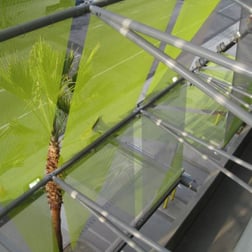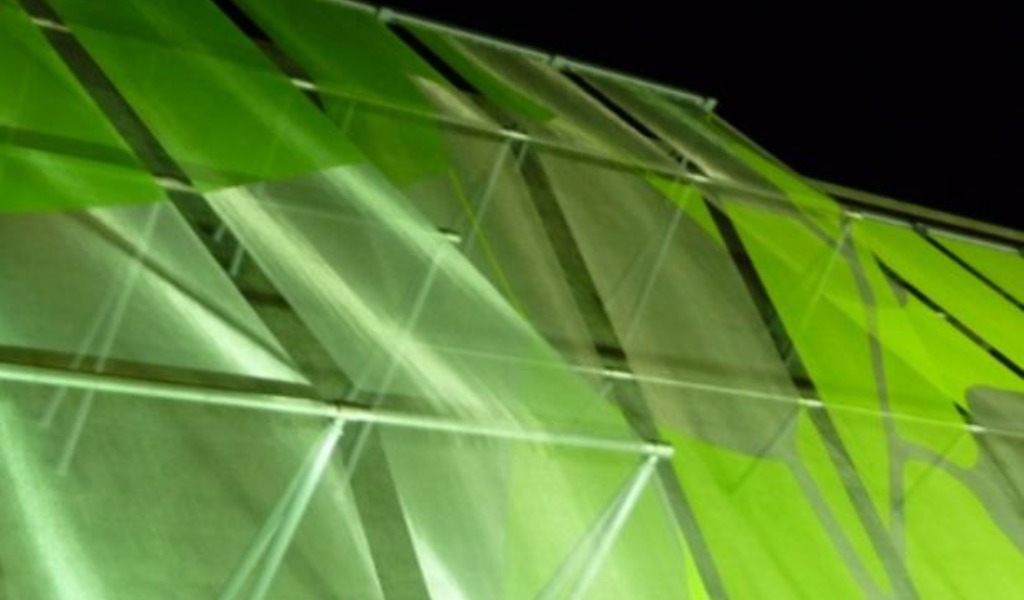How to Create Undulating Affects With Decorative Wire Mesh
Architectural Mesh - Exterior | Architectural Mesh - Interior
Decorative wire mesh is a design material known for delivering a lustrous, modern, and dynamic atmosphere. Because it perfectly balances durability with visual aesthetics, your imagination is the only true limitation associated with decorative mesh.
But despite being constructed from stainless steel, decorative wire mesh remains relatively pliable. This allows architects to do things, such as incorporate undulating mesh panels, to create a sense of movement and create more exciting designs.
So, what should you expect when looking to weave undulating decorative wire mesh panels into your architectural design process?
For over 20 years, W.S. Tyler has stood by architects such as yourself to help develop trust in the possibilities of decorative wire mesh.
To provide insight into how undulating describe wire mesh panels fit your process, the following article will establish:
- What an intermediate tube is
- How decorative wire mesh panels are used in an undulating design
- The things you should look out for when applying decorative wire meh to undulating designs
- How undulating decorative wire mesh panels affect the cost of the overall system
What Is an Intermediate Tube?

In regards to decorative wire mesh systems, intermediate tubes are mounting hardware designed to keep the wire mesh panels secure and in place. They work to pull each decorative wire mesh panel back towards the structure using wire connectors that wrap around the wires of the mesh.
Now, while the panels of a decorative wire mesh system must be tensioned, the intermediate tubes do not carry any tensioning loads. For a more in-depth breakdown of the importance of intermediate tubes, review the following article:
How Can I Create an Undulating Design With Intermediate Tubes?
 There are scenarios in which creating movement throughout your design will either complement other design elements or improve the impact of the design. Regardless, the intermediate tubes of your decorative wire mesh system can be used to create undulating movement throughout a mesh panel.
There are scenarios in which creating movement throughout your design will either complement other design elements or improve the impact of the design. Regardless, the intermediate tubes of your decorative wire mesh system can be used to create undulating movement throughout a mesh panel.
With a standard system, you will typically see intermediate tubes behind the wire mesh panels every 10 feet. When attempting to create the in and out visual, every other intermediate tube is instead put in front of the mesh with the panel wrapping around the backside of the tube.
When installing the intermediate tubes, one set will be positioned slightly farther out than the other set to create that undulating look and feel.
What Should I Look Out for When Working With Undulating Decorative Wire Mesh Panels?
Typically, the top connection points of a decorative wire mesh system go straight down. However, a different connection referred to as a hillside washer must be used at the top connection points to accommodate the angle of the undulating panel.
Additionally, the intermediate tubes positioned in front of the mesh must be more sturdy than those located behind the mesh. This is because you must ensure that these intermediate tubes can withstand the force of the panel wanting to pull away from the building.
The other thing you may run into is that, while typical intermediates connect back to the building, custom cutouts may need to be made in your panels, depending on their size. As there are connector brackets every 24 inches, it's critical that these cutouts are extremely accurate.
How Does Undulating Movement Affect the Cost of Decorative Wire Mesh?
When looking at the mesh, the labor and material needed to weave undulating mesh panels are the same as panels that go straight down. This means there is no effect on the cost of the mesh itself.
The real impact in cost is seen with the increased labor associated with the custom fabrication needed for your particular design. Specifically, the custom cutouts needed to accommodate the intermediate tubes placed in front of the mesh.
It should also be noted that undulating panels must be secured using intermediate tubes larger than those used with standard decorative wire mesh systems. This means an increased amount of material is used, naturally increasing the cost of the mounting hardware.
Create a Comprehensive Dynamic Decorative Wire Mesh System With Colorized Panels
Undulating decorative wire mesh systems utilize the strength and support of the system's intermediate tubes to push the panel away and bring it back in repeatedly. As a result, architects can create a sense of movement throughout the design.
Now, being an architect, your main priority is delivering a complete design that accurately captures your vision while giving patrons a memorable experience. One of the best ways to make your decorative wire mesh panels pop is applying a colorization technique, such as painting or digital print, to add flair without sacrificing the stainless steel qualities.
W.S. Tyler has helped architects weave decorative wire mesh into their architectural design process for over 20 years and strives to help you produce designs that you can proudly stand behind.
For more information regarding what colorization techniques make sense for you, we put the following article together:
About Ronnie Brown
Ronnie is the Content Writer for W.S. Tyler and has four years of experience as a professional writer. He strives to expand his knowledge on all things particle analysis and woven wire mesh to leverage his exceptional writing and graphic design skills, creating a one-of-a-kind experience for customers.




